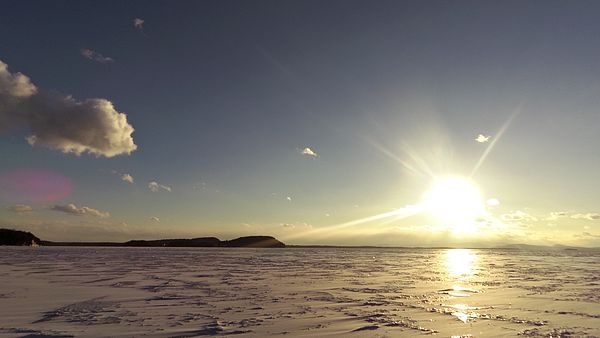The layer of ice now sitting atop Lake Champlain insulates the water from the atmosphere and alters some of the physical phenomena that are sometimes seen around the lake. On very cold days when the water is open, fog often develops over the lake as the warm water lifting from it condenses in the cold air above; that won’t occur with a layer of ice. Lake effect snow also won’t develop as winds whipping over the lake’s surface will not be picking up that extra water vapor.
Surprisingly, an ice layer can keep the lake warmer. Water freezes at 0°C but is most dense at 4°C. So when the lake reaches 4°C it continues to cool even if it hasn’t quite frozen. However, an ice layer over the top of the lake insulates it and the water beneath the ice remains above 0°C. While the water closest to the surface will be near 0°C, the deeper waters might be a few degrees warmer.
The prevalence of ice shanties provides proof that fish remain active under the ice cover, but they’re not the only ones. Diatoms, a form of algae, continue to photosynthesize on light that passes through the ice layer. Sometimes green blooms form in mid-winter. A number of plants will also remain green under the ice cover including water bulrush and water lobelia. Of course, plants that emerge from the water like cattails or lily pads, do not remain active through the winter.
